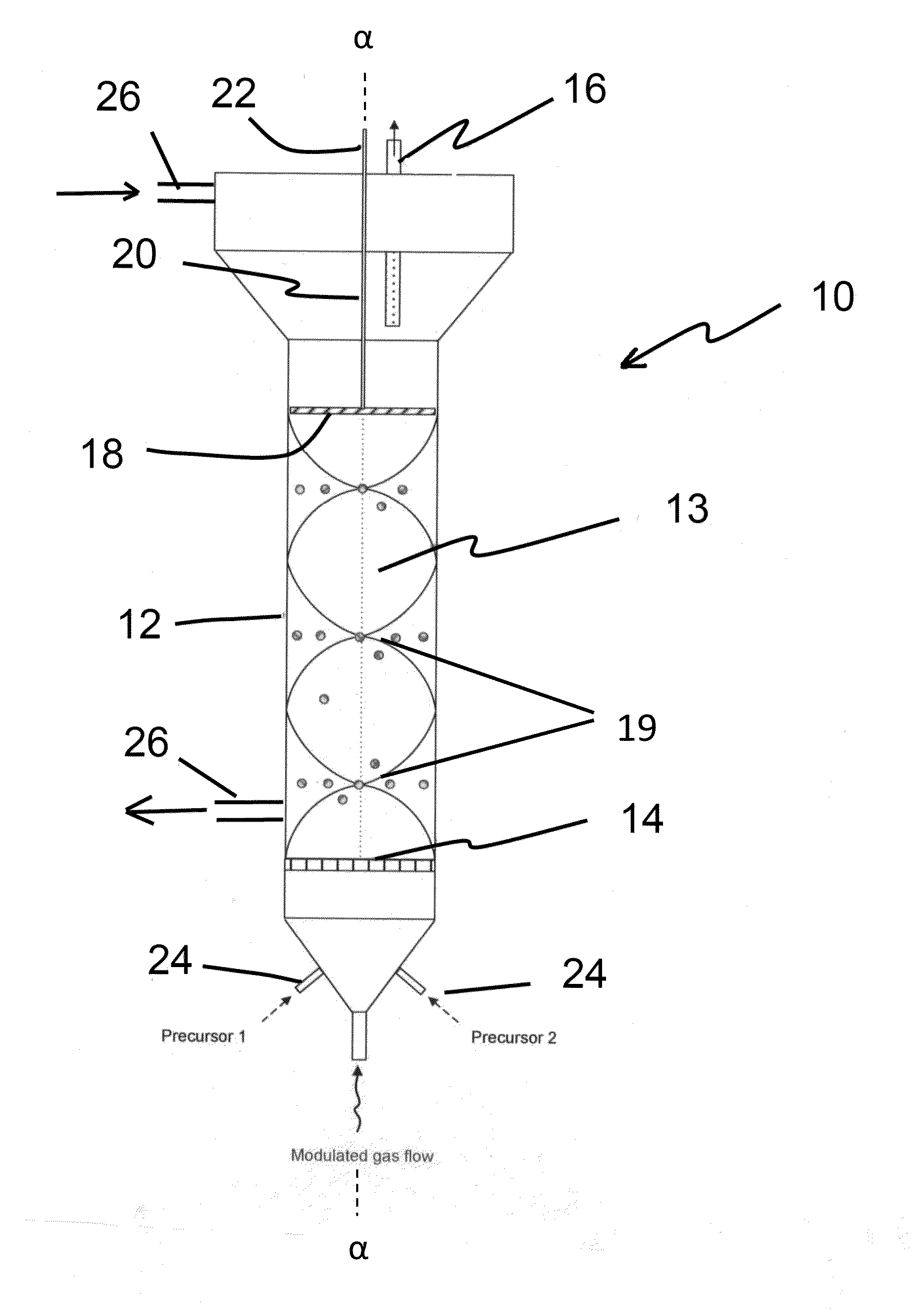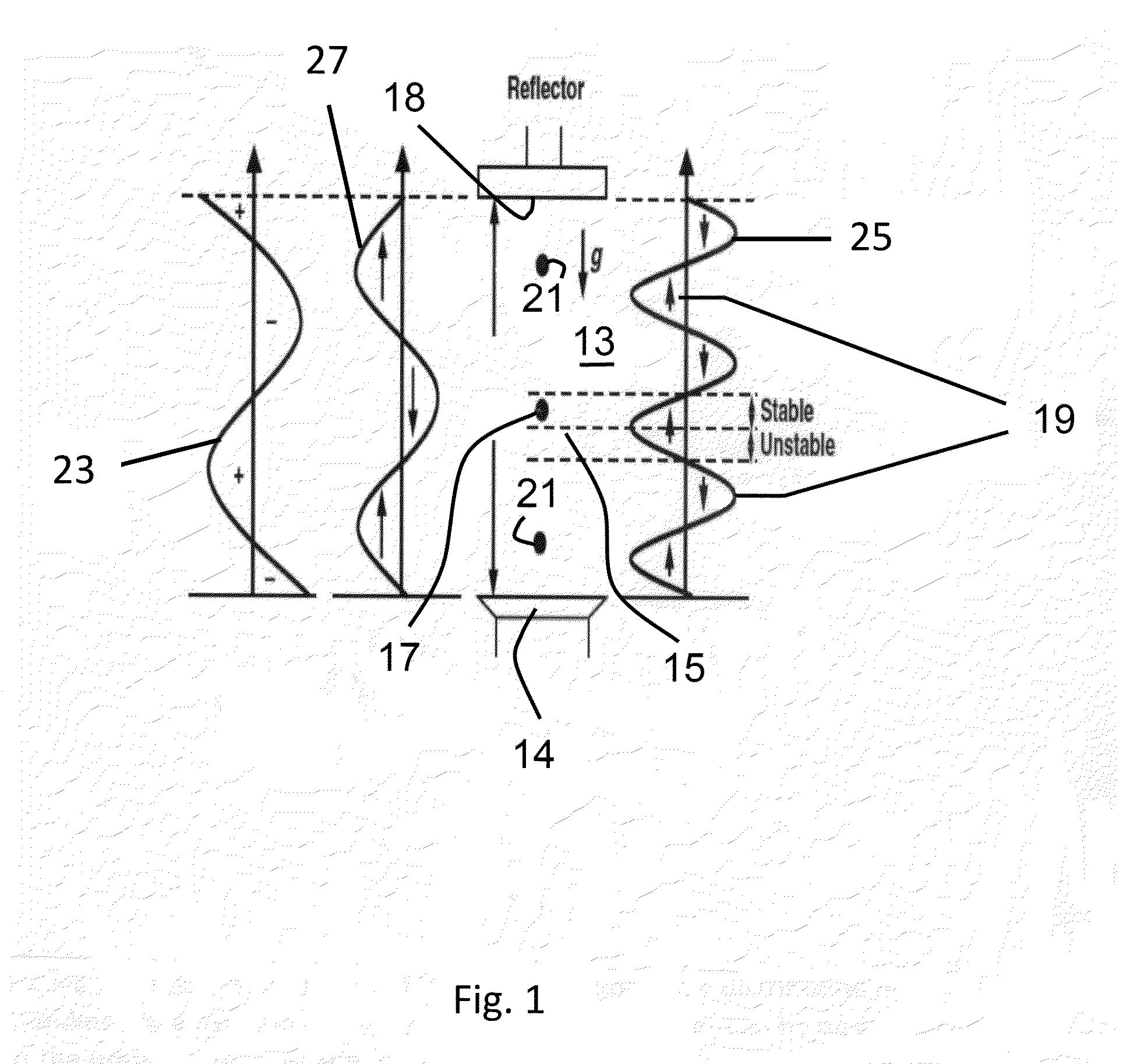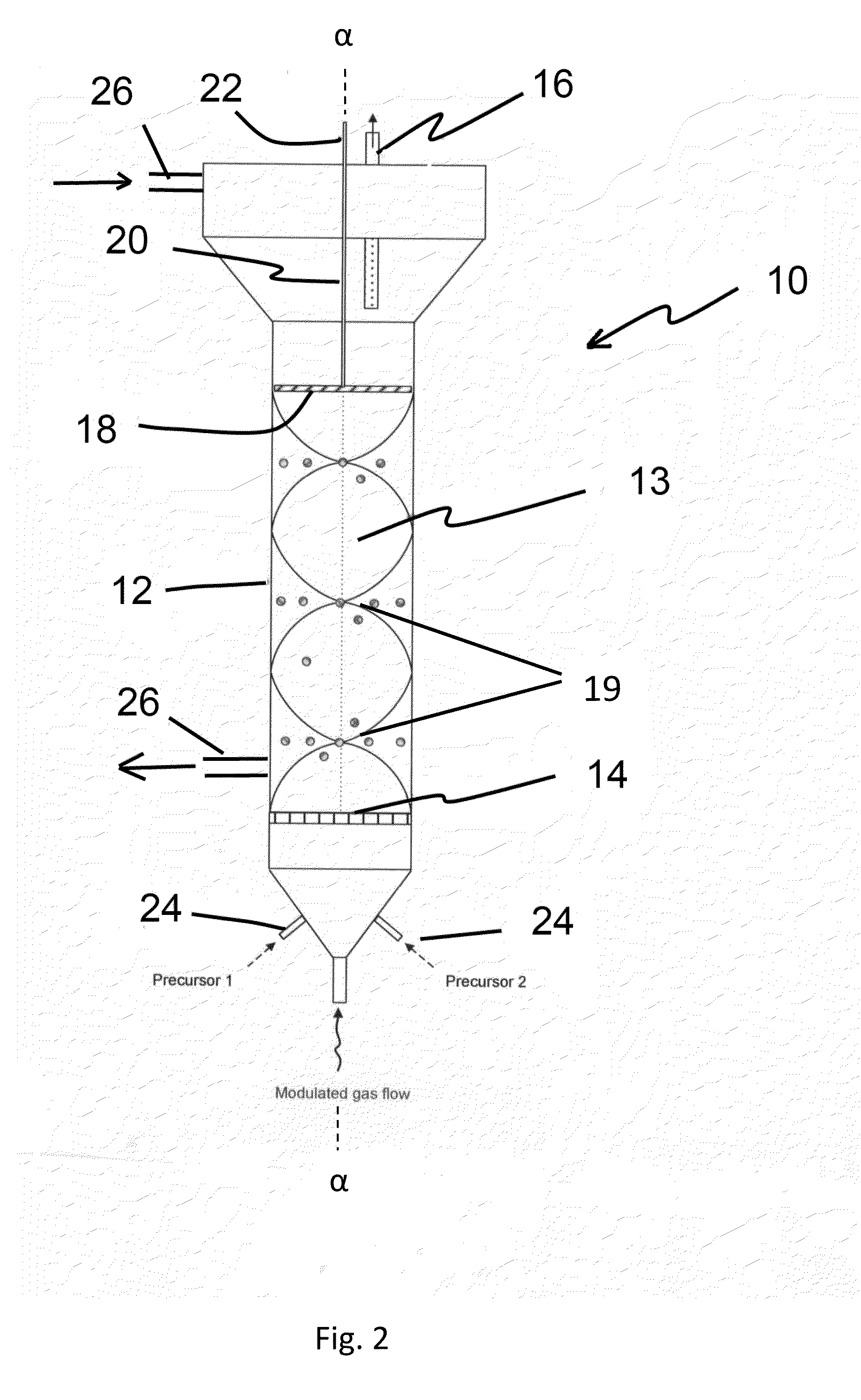Method for fluidizing and coating ultrafine particles, device for fluidizing and coating ultrafine particles
a technology of fluidizing and coating ultrafine particles, applied in the direction of watering devices, coatings, applications, etc., can solve the problems of affecting the performance of the electrolyte-based system, so as to prevent unwanted side reactions, prevent unwanted reactions of exposed particle surfaces, and improve performan
- Summary
- Abstract
- Description
- Claims
- Application Information
AI Technical Summary
Benefits of technology
Problems solved by technology
Method used
Image
Examples
example 1
Fluidization Example 1
[0107]Li-ion cathode particles, having a means size of between about 5 and 10 microns, were homogenously fluidized. The tap density was about 2 to 2.8 g / cm3. (Tap density is the powder density measured after the powders are tapped for a certain period of time while residing in a graduated cup, cylinder, container or other volume measuring means. The wave frequency was about 3 Hz using about 12 pounds per square inch (psi) inlet N2 pressure and atmospheric bed pressure. The fluidization occurred in a laboratory-scale sized fluidized bed having approximately a 4 centimeter outside diameter. Both atmospheric and vacuum conditions produced suitable alumina coatings, as depicted in FIG. 4 and discussed supra. Stable fluidization endured until the wave media feed was stopped.
example 2
Fluidization Example 2
[0108]LiNi0.5Mn1.5O4 particles of approximately 5 to 10 microns were fluidized. The wave frequency was about 3 Hz. Approximately 12 psi nitrogen press and a vacuum bed pressure (2 torr) was utilized. (Typically, frequencies between about 1 and 10 Hz are preferred.) The inventor discovered that stable fluidization occurs under both atmospheric and vacuum conditions for several hours until the gas flow is terminated.
example 3
[0109]Ultrafine particles are also partially homogenized via ultrasound waves. In this example, iron powder between about 1 to 10 microns in particle diameter are fluidized using 250 kHz frequencies, and at about 170 dB in sound intensity. This sound intensity represents the amplitude of the ultrasonic wave. Generally, between 100 dB and 200 dB are suitable acoustic frequencies for ultrasonic mixing of the particles. Compared to fluid modulation discussed supra, the sound wave approach imparts lower pressure intensities.
[0110]In all examples, a wave reflector is utilized. Also in all examples, evidence of homogenous dispersion was an observed by either visualizing the powder fluidization (by looking through the walls of the reactor container when quartz reactors are utilized), by noting pressures drop across the fluidized bed, (which result from a suspended bed weight), by calculating the suspended particle density, or a combination of these means. The process continued until the wa...
PUM
| Property | Measurement | Unit |
|---|---|---|
| diameter | aaaaa | aaaaa |
| diameter | aaaaa | aaaaa |
| diameter | aaaaa | aaaaa |
Abstract
Description
Claims
Application Information
 Login to View More
Login to View More - R&D
- Intellectual Property
- Life Sciences
- Materials
- Tech Scout
- Unparalleled Data Quality
- Higher Quality Content
- 60% Fewer Hallucinations
Browse by: Latest US Patents, China's latest patents, Technical Efficacy Thesaurus, Application Domain, Technology Topic, Popular Technical Reports.
© 2025 PatSnap. All rights reserved.Legal|Privacy policy|Modern Slavery Act Transparency Statement|Sitemap|About US| Contact US: help@patsnap.com



